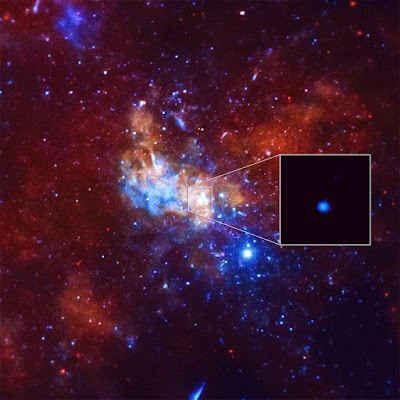Our Home: Milky way
 |
| Image Courtesy: NASA |
• The Milky Way Galaxy serves as our cosmic home. It's a huge expanse of stars, planets, gas, dust, and secrets waiting to be discovered. The Milky Way is a thin ring of light that stretches across the night sky. So, what precisely is it? Let's go over all you need to know about our galaxy.
What Is The Milky Way?
 |
| Image Courtesy: Wikipedia |
• The Milky Way is a huge spiral galaxy. It is fashioned like a flat disk with spiral arms radiating from the center. Imagine a massive maelstrom made of stars.
• Even at the speed of light, traveling across our galaxy would take 100,000 years! It is home to billions of stars (about 100-400 billion) and possibly as many planets. One of these planets is Earth, which is our home.
What does the Milky Way look like?
.png) |
| Image Courtesy: Wikipedia |
• From Earth, the Milky Way appears as a bright, hazy ring of light in the night sky. This light is emitted by billions of distant stars, which are so close together that their light merges.
• If you live in a city, light pollution might make it difficult to see the Milky Way. However, if you go to a dark spot away from the city lights, you can see this stunning vista.
How Is the Milky Way Structured?
 |
| Image Courtesy: Wikipedia |
The Milky Way is divided into various parts, each playing a unique role in the galaxy.
1. The galactic core: The galactic core is located in the very heart of the Milky Way. This region is densely populated with stars and houses the supermassive black hole Sagittarius A*. It's millions of times heavier than the Sun!
2. Spiral arms: The Milky Way has spiral arms where the majority of its stars and gas are located. These arms are areas where young stars are formed. Our solar system is positioned in one of the smaller arms known as the Orion Arm.
3. The Galactic Disk: This is the flat, spinning region of the galaxy that contains stars, planets, and gas.
4. The Halo: The disk is surrounded by a halo composed of older stars and enigmatic dark matter.
How do stars form in the Milky Way?
 |
| Image Courtesy: Wikipedia |
• Nebulae, or massive clouds of gas and dust, are where stars form. Gravity brings the gas and particles together, and as they collide, they heat up. When the core becomes sufficiently hot, nuclear fusion occurs, resulting in the birth of a star.
• Why do stars form? It is merely the outcome of the universe's basic forces at work. Gravity and energy combine to generate the blazing balls of light that illuminate our galaxy.
Can We See The Milky Way?
 |
| Image Courtesy: Wikipedia |
• Yes! The Milky Way is visible from Earth, but only in a dark place away from city lights. It is best seen during the Northern Hemisphere's summer nights.
Why Is the Milky Way Important?
• The Milky Way is more than simply a galaxy. It's a cosmic factory that produces stars, planets, and the elements necessary for life. Without it, we would not exist.
• The Milky Way's stars produce elements such as carbon, oxygen, and iron. These elements are required for life on Earth and are distributed throughout the galaxy when stars explode as supernovae.
Unsolved Mysteries in the Milky Way
.png) |
| Image Courtesy: Wikipedia |
• Despite knowing a lot about the Milky Way, many mysteries remain. What precisely is dark matter, and how does it effect our galaxy? How did the Milky Way form?
• Are there any other intelligent beings existing in our galaxy? Scientists are attempting to answer these concerns, and each new finding takes us closer to understanding our place in the cosmos.
Our Home in the Universe
 |
| Image Courtesy: Wikipedia |
• The Milky Way is more than just a group of stars and planets. It serves as a reminder of the universe's vastness and tremendous scope. By examining our galaxy, we can learn more about our origins and future prospects.
• The next time you look up at the stars, remember that you are only seeing a small portion of the Milky Way. And who knows. Perhaps one day we will explore its ultimate reaches.




.jpeg)

0 Comments